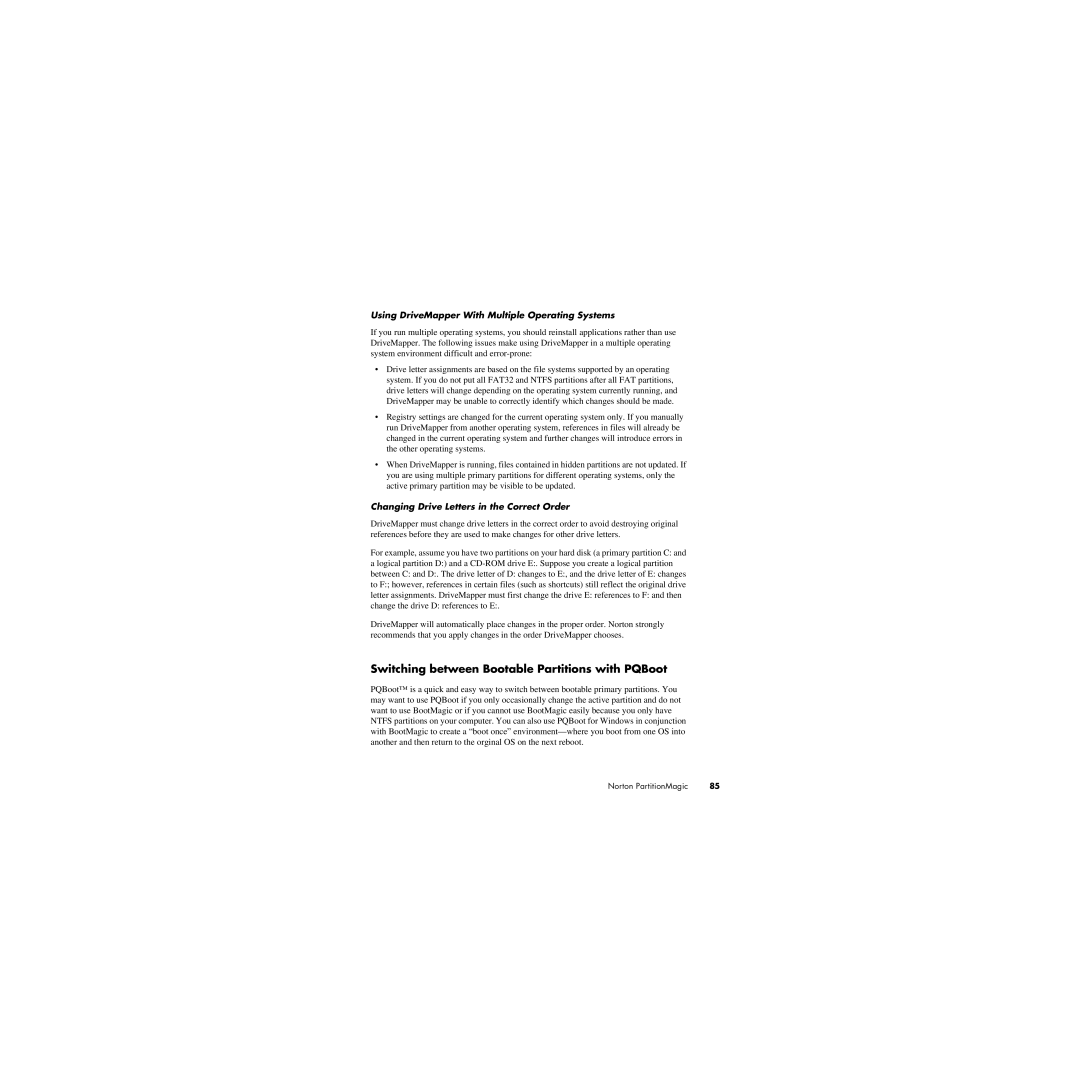Using DriveMapper With Multiple Operating Systems
If you run multiple operating systems, you should reinstall applications rather than use DriveMapper. The following issues make using DriveMapper in a multiple operating system environment difficult and
•Drive letter assignments are based on the file systems supported by an operating system. If you do not put all FAT32 and NTFS partitions after all FAT partitions, drive letters will change depending on the operating system currently running, and DriveMapper may be unable to correctly identify which changes should be made.
•Registry settings are changed for the current operating system only. If you manually run DriveMapper from another operating system, references in files will already be changed in the current operating system and further changes will introduce errors in the other operating systems.
•When DriveMapper is running, files contained in hidden partitions are not updated. If you are using multiple primary partitions for different operating systems, only the active primary partition may be visible to be updated.
Changing Drive Letters in the Correct Order
DriveMapper must change drive letters in the correct order to avoid destroying original references before they are used to make changes for other drive letters.
For example, assume you have two partitions on your hard disk (a primary partition C: and a logical partition D:) and a
DriveMapper will automatically place changes in the proper order. Norton strongly recommends that you apply changes in the order DriveMapper chooses.
Switching between Bootable Partitions with PQBoot
PQBoot™ is a quick and easy way to switch between bootable primary partitions. You may want to use PQBoot if you only occasionally change the active partition and do not want to use BootMagic or if you cannot use BootMagic easily because you only have NTFS partitions on your computer. You can also use PQBoot for Windows in conjunction with BootMagic to create a “boot once”
Norton PartitionMagic | 85 |
